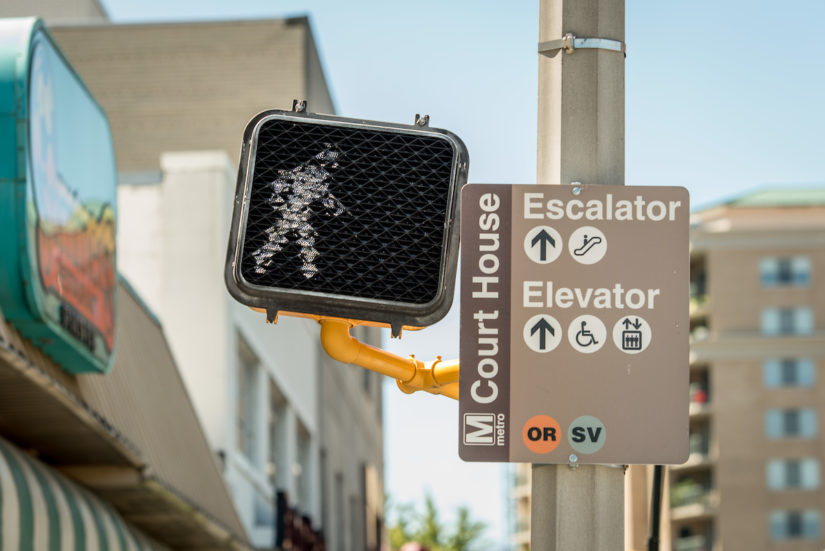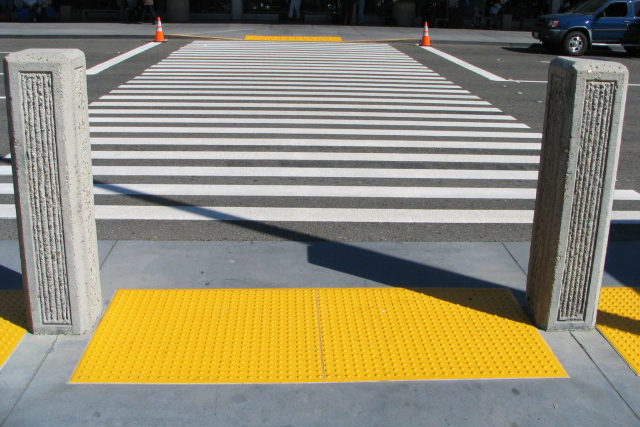What Doodles Taught Me about Walking
We love learning what the “Google Doodle” has in store for us, and there’s a lot to learn about walking.
Who doesn’t love the celebratory commissioned graphics, known as Google Doodles, that every so often replace Google’s logo on its homepage? They’re a great way to learn something new, and over the years there have even been a few about walking.

Seiichi Miyake
Japanese inventor Seiichi Miyake invented the now ubiquitous tactile pavement used around the world that helps the visually impaired navigate public space. Miyake designed the blocks, called Tenji blocks or Braille blocks, when a friend began to lose their vision. He designed the blocks with raised bars and bumps that alert visually impaired pedestrians at the edges of crosswalks and train platforms. They can be detected with either a white cane, guide dog, or through shoes.
Miyake’s yellow tactile pavement gradually spread from Japan, where it was made mandatory in the Japanese National Railways in the 1970s, to around the world, including here in Arlington! You can find tactile pavement on the edge of every Metrorail platform and on newer curb cuts, such as those at the intersection of N Wayne St and Wilson Blvd in Court House.
Google’s Doodle on March 18, celebrated the first installation of Miyake’s tactile blocks in 1967 on a street near the Okayama School for the Blind in Okayama City, Japan.
Xiaolüren’s 17th birthday
Did you know the pedestrian crossing signal icon has a name in Taipei? It’s Xiaolüren, or “little green man.” Xiaolüren lets people know how much time they have left to cross the street at signalized intersections. He can be found around the world, although in the US the icon is white, not green.
He first appeared on the scene in East Berlin, Germany, in 1961 as a static figure indicating it was safe to cross. Then in 1998, the Taipei City Government added a numeric countdown. In Taipei, Xiaolüren is animated to even move his legs faster depending on how much time there is left to cross.
Google paid tribute to Xiaolüren on March 18, 2016.
Lucy Discovery
Do you remember learning about Lucy in school? Lucy is our most famous early human ancestor. Much of her skeleton (about 40 percent) was found, allowing scientists to learn a lot about her. The most important thing, perhaps, is that her 3.18 million-year-old Australopithecus afarensis skeleton showed that she walked upright. Walking upright, or bipedalism, is an important evolutionary development.
She was discovered near the Ethiopian village of Hadar on November 24, 1974, by scientists Dr. Johanson and student Tom Gray. Apparently, she received the name Lucy due to a popular song at the time, “Lucy in the Sky With Diamonds” by the Beatles, that was playing during their celebration of their find.
Google Doodle celebrated the 41st anniversary of Lucy’s discovery on November 24, 2015.
More Inspiration
Want to be inspired and learn even more about what’s around you? Try these walking apps for Google-Doodle style inspiration on the go.
Sam Kittner/Kittner.com











Comments are closed here.
To prevent spam, comments will be approved before appearing on the post. If you have a comment or question, but do not want it to be published, please email WalkArlington.